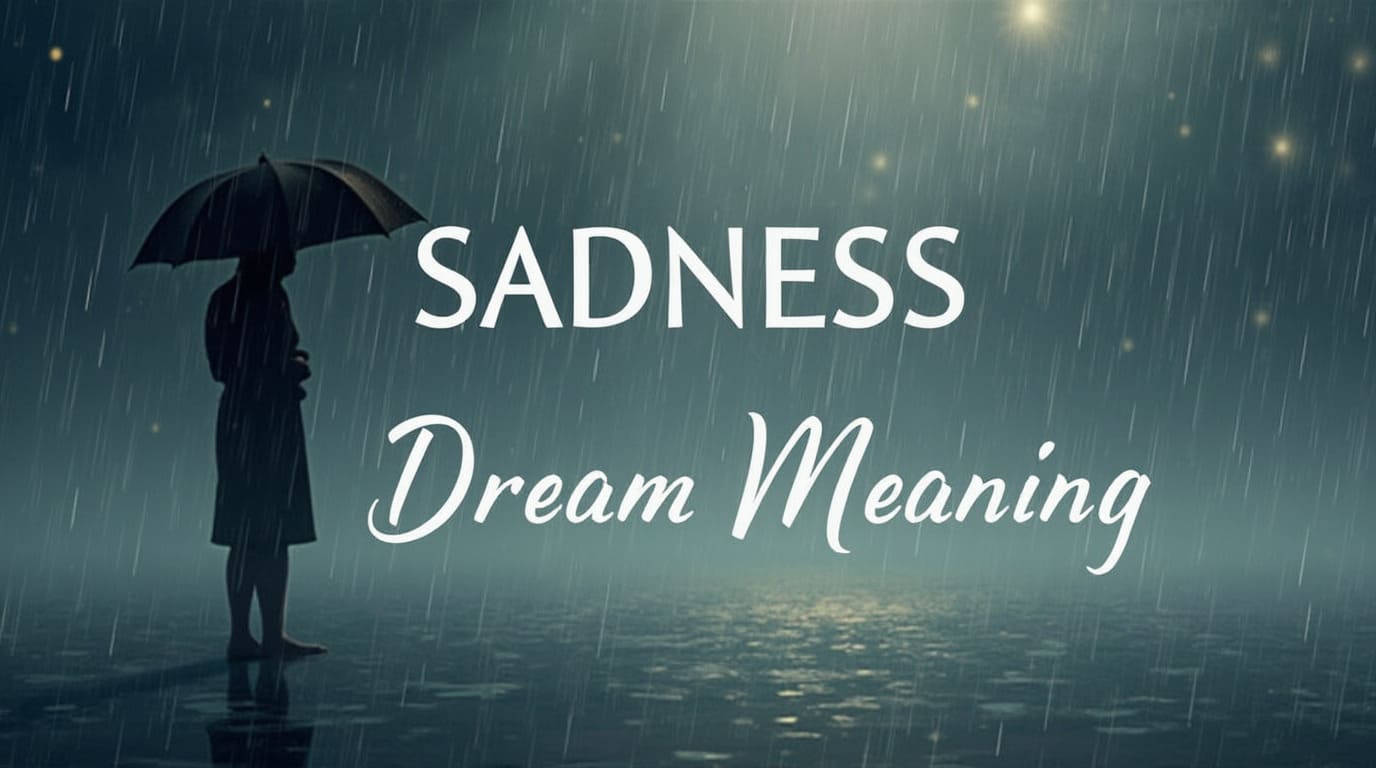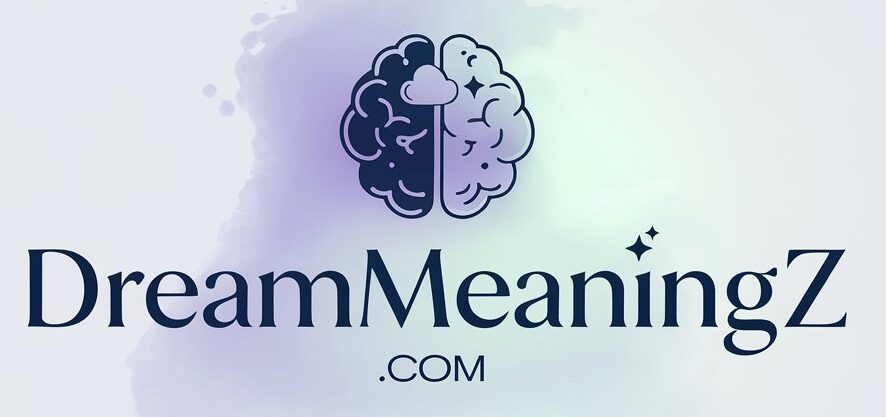Sadness Dream Meaning

Dreams about feeling sadness can mean different things, depending on the symbols in the dream. This is a key part of understanding dreams and emotional experiences. Studies show that 65% of dreams where we cry are about releasing deep emotions. This shows how important sadness dreams are in our emotional lives.
Sadness dreams can mirror our waking emotions and experiences. Dream interpretation helps us understand our emotional state. For example, 80% of dream interpretations say crying in dreams is about feeling helpless and sad about unresolved issues. This is a common theme in sadness and emotional dreams.
Exploring sadness in dreams helps us understand our emotional experiences better. It shows how our dream life relates to our emotions. This understanding can help us navigate our emotional journeys and heal from difficult feelings. It leads to a deeper understanding of emotional dreams.
The Science Behind Emotional Dreams
Dreams often mirror our waking emotions, showing sadness, loneliness, or overwhelm. The brain’s activity during sleep is key in processing these feelings. Studies link vivid, bizarre dreams to specific brain parts, like the amygdala and hippocampus.
The dream psychology is complex, but research shows a link between brain waves and dream recall. REM sleep, with its increased brain activity, makes dreams vivid. This stage starts 10 to 60 minutes after falling asleep.
Brain Activity and Emotional Processing
Brain activity during sleep is vital for emotional processing. Dreams help us explore and resolve emotional issues. Dreaming also aids in memory consolidation, helping us learn and regulate emotions.
Chemical Responses and Sleep Cycle Impact
Chemical responses from sad dreams can affect the sleep cycle. This can make understanding complex emotions harder. The sleep cycle plays a big role in processing and consolidating emotions.
| Stage of Sleep | Brain Activity | Emotional Processing |
|---|---|---|
| REM Sleep | Increased brain activity | Vivid and emotionally intense dreams |
| Non-REM Sleep | Decreased brain activity | Less intense emotional processing |
Common Symbols in Sadness Dreams
Sad dreams show what our subconscious mind is feeling. They can reveal hidden emotions and worries. Symbols in these dreams help us understand our inner feelings.
When we dream of crying or feeling lost, it shows how we’re feeling inside. Dream analysis helps us figure out these symbols. This way, we can learn more about ourselves and our feelings.
Some common symbols in sadness dreams include:
- Dreams without color or in grey, showing a lack of joy in our lives
- Dreams of falling or drowning, meaning we feel overwhelmed
- Seeing objects underwater, showing hidden feelings or unresolved issues
Looking at these symbols helps us understand our emotions better. It lets us find ways to handle our feelings. Dream analysis is a powerful tool for growing and knowing ourselves better.
| Symbol | Meaning |
|---|---|
| Crying in a dream | Releasing deeply suppressed emotions |
| Dreams about death | Warnings about health issues or prompts for change |
| Dreams involving water | Emotions like sadness or anger, with themes of cleansing and renewal |
The Connection Between Daily Life and Sad Dreams
Dreams about feeling sad can show us what’s missing in our lives. They might suggest we need to make some changes. Our daily stress and unresolved feelings can show up in our dreams as sadness.
Our subconscious mind works on tough emotions through dreams. It helps us understand and handle our feelings. By looking at our dreams, we can see how we’re feeling and what we need to change.
Stress and Dream Manifestation
Stress can make our dreams negative, leading to feelings of anxiety and fear. When we’re stressed, our brain focuses more on negative emotions. This can make us dream more about sadness.
By managing our stress, we can dream less about sadness. This improves our emotional health.
Unresolved Emotions in Dreams
Unresolved emotions can also show up in our dreams, making us feel sad. Facing and solving these emotions can make our dreams happier. Techniques like self-reflection and journaling can help.
Past Experiences and Dream Content
Our past experiences shape our dreams, with negative ones more likely to appear. Understanding this can help us see our emotional state. It shows us where we need to make changes.
This knowledge helps us process our emotions better. It can make our dreams less sad and improve our well-being.
Cultural Perspectives on Sadness Dream Meaning
Dreams have always fascinated people worldwide. Each culture has its own way of understanding them. They see dreams as a way to connect with others and share values.
Studies show that dreams vary greatly between cultures. For example, dreams from some African tribes are full of community life. In contrast, dreams from Western societies often show sadness and worry. This shows how important culture is when we talk about dreams and sadness.
Some interesting findings about dreams and sadness across cultures include:
- Dreams from the Hadza community in Tanzania show less sadness than Western dreams.
- The BaYaka community in the Democratic Republic of Congo dreams a lot about community.
- Dreams from the Global North, like those with nightmare disorder, often have more sadness.
These discoveries highlight the importance of looking at dreams through a cultural lens. By studying dreams globally, we can better understand how they help us cope with emotions and connect with others.
| Culture | Dream Characteristics |
|---|---|
| BaYaka | Rich community-oriented content, heightened threat dream content |
| Hadza | Fewer negative emotions, low anxiety, social support-oriented dream conclusions |
| Western Societies | Increased negative emotions, anxiety, and nightmare disorder |
Physical and Emotional Effects of Sad Dreams
Sad dreams can really affect us when we wake up. We might feel helpless and sad. It’s common to wake up after crying in a dream, showing we’re overwhelmed and sad.
Studies show sleep quality is key for emotional processing. Our brain deals with emotions during REM sleep, leading to vivid dreams. It takes up to six days for our experiences to show in dreams. So, good sleep is vital for emotional health.
Here are some common effects of sad dreams:
- Increased stress and anxiety
- Decreased mood and irritability
- Physical symptoms such as headaches and fatigue
To handle sad dreams, we can improve our sleep and emotional health. Mindfulness, journaling, and social support help manage emotions. This way, we can better cope with the aftermath of sad dreams.
| Effects of Sad Dreams | Physical Symptoms | Emotional Symptoms |
|---|---|---|
| Sleep Disturbances | Insomnia, fatigue | Anxiety, depression |
| Emotional Overload | Headaches, muscle tension | Irritability, mood swings |
| Decreased Mood | Loss of appetite, weight gain | Sadness, hopelessness |
Types of Sadness in Dreams
Dreams can make us feel a wide range of emotions, and sadness is very common. The sadness we feel in dreams can be mild or very deep, showing different parts of our feelings. These feelings can come from many places, like unresolved emotions, past experiences, and stress.
Crying in dreams can mean we’re dealing with feelings we didn’t know about. This can be a good thing. It helps us understand ourselves better and what we need emotionally.
Some common types of sadness in dreams include:
- Loss and grief: Dreams about losing someone or facing a big loss can make us feel very sad.
- Failure and disappointment: Dreams about not succeeding or feeling let down can make us feel sad and frustrated.
- Loneliness and isolation: Dreams about being alone or feeling left out can make us feel sad and disconnected.
Knowing about the different kinds of sadness in dreams can help us understand and deal with our feelings. By looking into dream emotions and sadness, we can learn more about our dreams. This can help us manage our feelings and live a more fulfilling life.
| Type of Sadness | Description | Trigger |
|---|---|---|
| Loss and Grief | Dreams about losing a loved one or experiencing a significant loss | Unresolved emotions, past experiences |
| Failure and Disappointment | Dreams about failing at something or being disappointed | Stress, anxiety, fear of failure |
| Loneliness and Isolation | Dreams about being alone or isolated | Feeling disconnected, lack of social support |
Therapeutic Approaches to Processing Sad Dreams
Dealing with sad dreams can be tough, but the right therapy can help. Dream therapy is a key tool for understanding our subconscious. It helps us find the reasons behind our sad dreams.
Dream journaling is a great way to start. It means writing down and thinking about your dreams. This helps you see patterns and understand your feelings better. It’s a step towards healing your emotions.
Dream Journaling Methods
There are many ways to journal your dreams. You can write them down, draw them, or even record them. The most important thing is to find a method that feels right to you. And make sure to do it regularly.
Professional Dream Analysis
Working with a therapist to understand your dreams can also be helpful. This is good for those who can’t make sense of their dreams or have nightmares. A therapist can help you understand your feelings and find ways to cope.
Self-reflection Techniques
Meditation and mindfulness are also useful. They help you become more aware of your thoughts and feelings. By reflecting on yourself, you can understand your emotions better. This leads to healing and better emotional control.
| Therapeutic Approach | Description | Benefits |
|---|---|---|
| Dream Journaling | Recording and reflecting on dreams | Develops self-awareness, identifies recurring themes and emotions |
| Professional Dream Analysis | Working with a therapist to interpret and understand dreams | Gains deeper understanding of emotions, develops coping strategies |
| Self-reflection Techniques | Practicing meditation and mindfulness | Develops self-awareness, improves emotional regulation |
Transforming Dream Sadness Into Personal Growth
Dreams about feeling sadness remind us to care for our mental and emotional health. By understanding these dreams, we can grow emotionally and learn more about ourselves. This journey can help us improve and make positive changes in our lives.
To turn dream sadness into growth, reflect on your dreams’ emotions and themes. Here are some dream lessons to consider:
- Identifying patterns and unresolved emotions that may be contributing to your sadness
- Developing coping strategies to manage stress and anxiety
- Practicing self-compassion and self-care to improve your overall well-being
By using these lessons in your daily life, you can grow emotionally and make positive changes. Remember, dreams offer insights and feelings that can change how we think. As you work on transforming your dream sadness, trust your gut sense for the right interpretation.
| Dream Theme | Emotional Intelligence Lesson |
|---|---|
| Falling dreams | Letting go of control and trusting the process |
| Teeth dreams | Embracing vulnerability and imperfection |
| Chase dreams | Developing self-awareness and self-acceptance |
Keep moving forward in your journey of self-improvement and growth. Dreams are a powerful tool for change. By embracing your dream sadness and applying the lessons, you can grow emotionally and live a more authentic, fulfilling life.
Conclusion
Dreams reflect our thoughts and feelings. Dream interpretation takeaways can give us emotional dream insights for personal self-reflection and growth. By noticing symbols, themes, and emotions in sad dreams, we can understand ourselves better. This helps us deal with challenges more effectively.
Dreams about endings often mean closure or a new start. They might show final goodbyes, transformation, or fear of the unknown. Seeing these dreams as opportunities can help us handle life’s ups and downs. It leads to better self-awareness and strength.
Dreams about death can lead to healing and growth. Exploring these dreams through therapy or self-reflection can reveal hidden messages. This helps us process complex emotions.
Your dreams are a powerful tool for self-discovery. Embrace them, analyze them, and let them guide you towards a brighter future. The journey may be tough, but your dreams can help you find the emotional strength and growth needed to overcome any obstacle.
© 2024 DreamApp Ltd.






